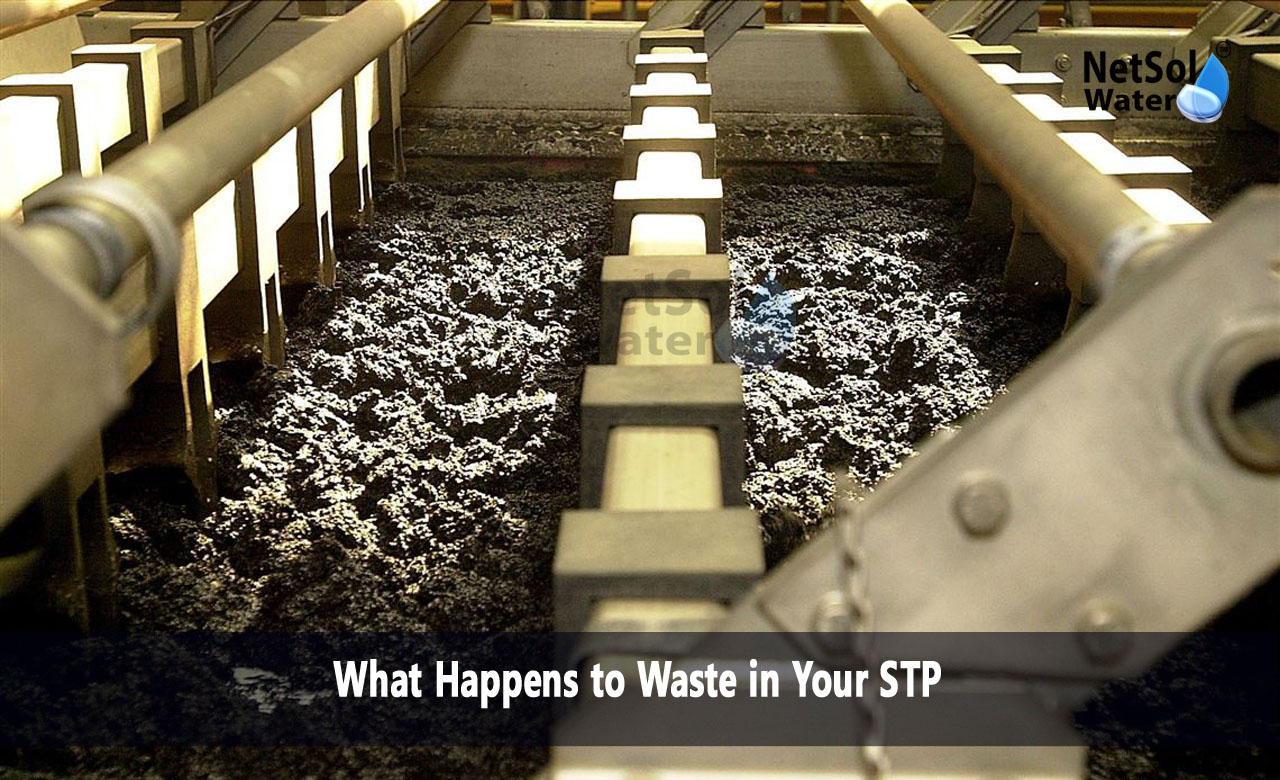What Happens to Waste in Your STP?
Every time you drain water from your home or office or flush down a toilet, all the water is routed into a Sewage Treatment Plant to be cleansed. Though it is eventually cleansed and let into the environment safely, there is another enormous byproduct created in the process named sewage sludge. A simple question, what is sewage sludge? How do we treat it? And why do we treat it?
We are going to find out everything about sewage sludge, how it is created, treated, and disposed of, so you can find out this most essential aspect of the sewage treatment process.
What Is Sewage Sludge?
Sewage sludge is the thick, semi-solid waste that is left after wastewater has been treated in an STP. Bacteria, suspended solids, and organic matter are separated from the wastewater and settle out while being treated. It is the thick, viscous substance that it becomes at different stages and is called sludge.
Sludge is a composite of organic, inorganic, and water components along with heavy metals and other pollutants. Since it is composite in character, it cannot be released indiscriminately and must be treated and disposed of specifically.
How Is Sewage Sludge Formed in an STP?
In a typical sewage treatment, raw sewage passes through primary and initial treatment processes first where settleable solids and coarse solids are stripped out. Recovered solid in the process is primary sludge.
Later during the secondary treatment process, microorganisms and bacteria are used by the biological processes to decompose organic contaminants found in the sewage. The microbes increase in volume and size as well and develop into biomass which settles as secondary sludge or activated sludge.
The solids from primary and secondary treatment combine to produce the sewage sludge to be treated.
Treatment of Sewage Sludge
Because sludge is laden with toxic pathogens and pollutants, it cannot be released into the environment unless treated. It is subjected to several treatment processes to reduce its volume, destroy pathogens, and stabilize organic matter. The most frequent sludge treatment operations are:
Thickening
Thickening thickens sludge by decreasing water content. Water is separated from solids by gravity or mechanical equipment like centrifuges or belt presses, decreasing transportation and disposal expenses.
Stabilization
Stabilization minimizes odors and disease-causing agents of sludge. Stabilization takes place as a result of biological treatment such as anaerobic or aerobic digestion where microbes further degrade the organic matter. Anaerobic digestion yields biogas, which can be utilized as fuel. Lime stabilization, pH increase, is another chemical pathogen kill treatment.
Dewatering
Dewatering takes out more water from the sludge and converts it to a semi-solid cake. Filter presses, centrifuges, or drying beds are some of the common technologies utilized. Dewatered sludge is less costly to transport, dispose, and manage.
Disposal and Reuse of Sewage Sludge
Disposed of properly or even reused as beneficially recycled, sewage sludge can be treated and reused as well as disposed of. Disposal and reuse with some of the common practices being:
Land Application
Processed biosolids or sludge may also be applied as fertilizer or soil conditioner for agriculture and landscaping. It is extremely nutrient-dense in the form of nitrogen and phosphorus but has to be certified beforehand as safe to use.
Landfilling
Sludge is not reusable in certain instances, and it is disposed of on landfilling grounds. Landfill space is limited, and generation of leachate and methane is environmentally a problem as well.
Incineration
Sludge is also incinerated to provide volume reduction and destruction of pathogens. Incineration energy can be recovered in certain instances, although regulation of air emissions is a concern.
Other Newly Emerging Techniques
Pyrolysis, gasification, and composting are also employed for sludge treatment into valuable commodities such as biochar or energy with minimal environmental impact.
Why Effective Sewage Sludge Management is Necessary?
Improper sewage disposal of sludge leads to serious health and environmental issues. Untreated sludge may lead to odour, attraction of insects, contamination of groundwater, and transmission of disease. Treatment and disposal properly eliminate all these hazards.
Besides, sustainable sludge treatment conserves resources. For instance, biosolids application to agricultural lands recycles nutrients and conditions the soil, minimizing chemical fertilizers.
Conclusion
Generally, sewage sludge is the concentrated, thick solid waste residue of wastewater treatment residuals. Sludge originates from the solid particles settled in various stages of the STP and from microbial biomass produced during biological stabilization. Appropriate treatment, such as thickening, stabilization, and dewatering of sludge, makes it easier to safely dispose of or reutilize.
Sewage sludge maintenance is required for resource preservation, public health, and resource preservation. Knowing what becomes of this waste in your STP is what brings home the importance of efficient sewage treatment systems to ensure clean water as well as a clean environment.
Do you need an advice or assistance on selecting the best water and waste water treatment unit? We have solutions for all your problems!
Let us know your problem, our experts will make sure that it goes away.
For an assistance or related query,
Call on +91-9650608473 Or write us at enquiry@netsolwater.com



